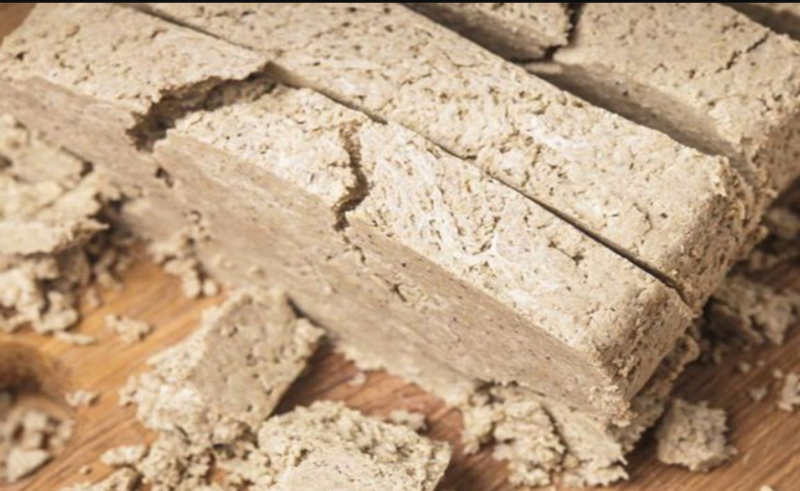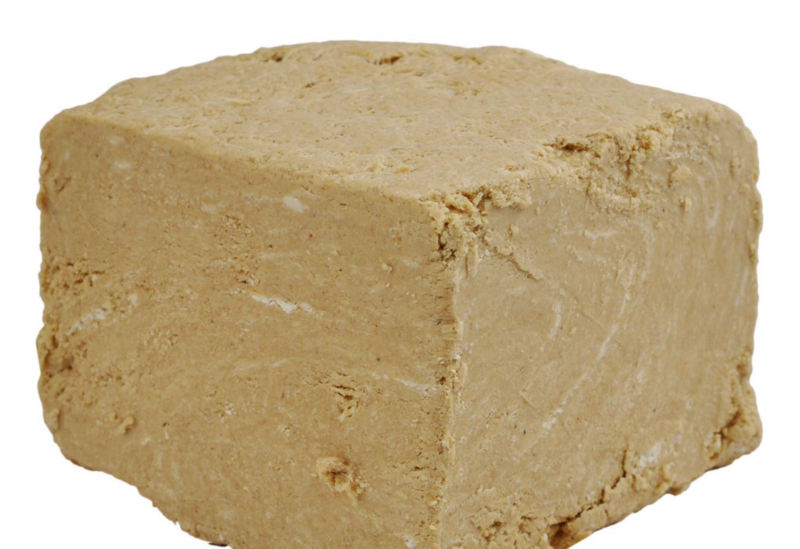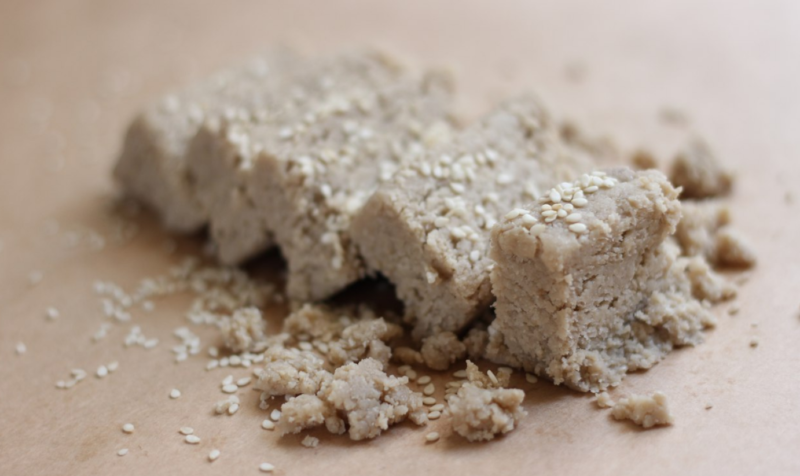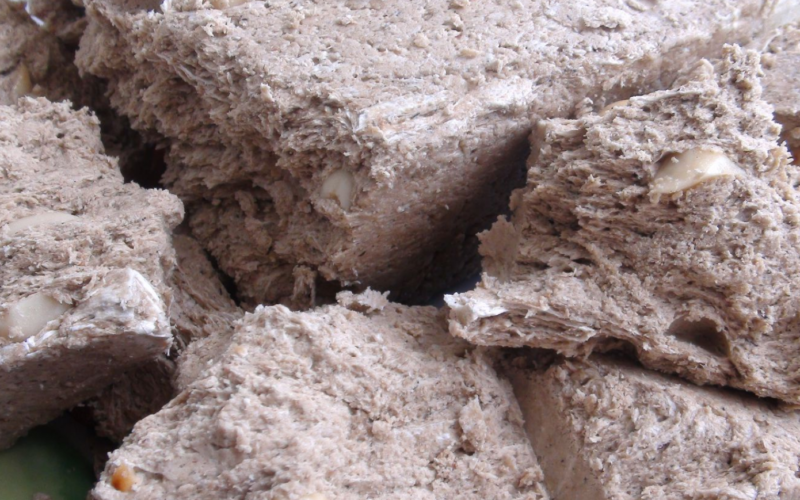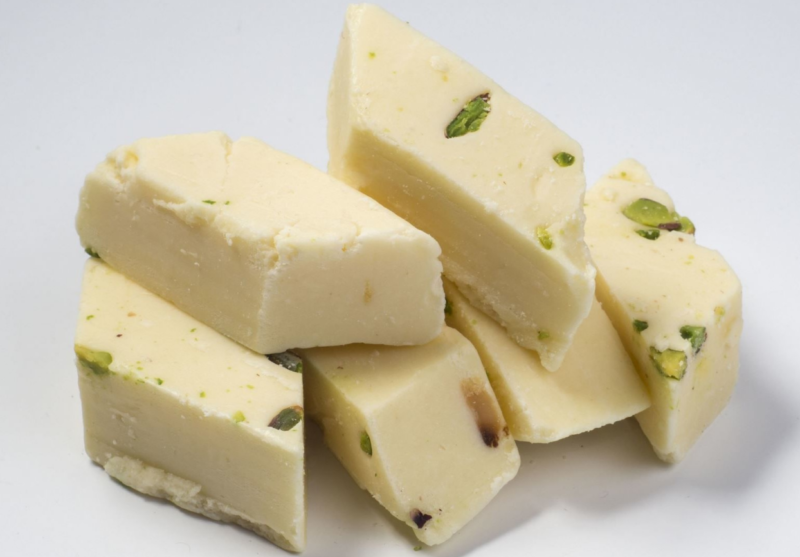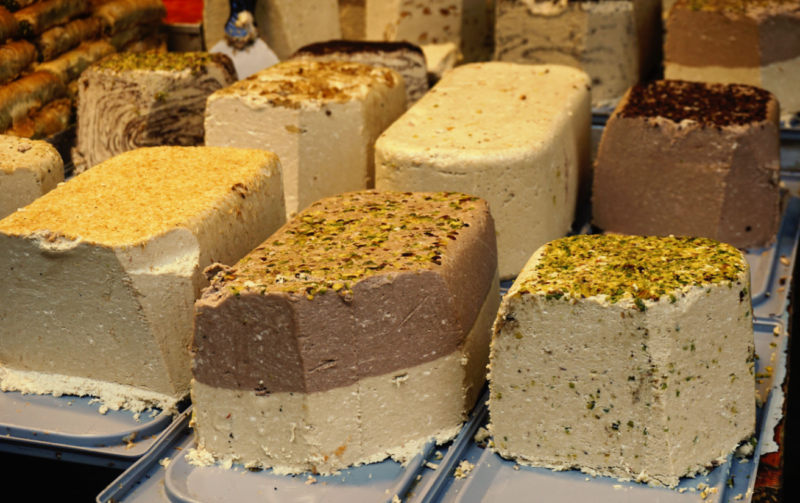Tahini halva is an oriental delicacy, and very useful. It contains many nutrients that help internal organs and systems function normally.
Material Content:
What are Tahini halva made of?
This delicacy is not so familiar to us, since it is common in the East. It is also called "tahini." It has an unusual bitter taste, but it is this that is a feature of sweetness that distinguishes it from ordinary halva from sunflower seed. So that bitterness is not felt so clearly, you should use sweetness with coffee or milk.
What is tahini halva made of? The product contains a paste of ground sesame seeds. This is the main ingredient.
Note. The sesame paste is very thick and has a high fat content.
The cooking process is quite painstaking. If the technology is not followed, then instead of a dessert melting in the mouth, a bitter and sugary taste product will be obtained.
Varieties of Goodies
Depending on the main ingredient in the composition, there are several types of sweets. Of course, a true tahini halva is made from sesame mass, but instead of sesame seeds, you can take peanuts or pistachios. It will turn out to be a delicious and also very healthy product.
Sesame seeds
Despite the fact that tahini is a sweet, it is much healthier than chocolate or marmalade. Useful properties are provided by the ingredients that are used during the preparation of goodies.
The basic composition of tahini halva:
- sesame seeds and tahini paste - the main ingredient;
- sugar, molasses, honey or caramel syrup - sweeteners;
- citric acid - flavor enhancer;
- soap root - a component that gives a layered structure.
But, in addition to the listed ingredients, nuts, raisins, candied fruits, cocoa, vegetable oil, vanillin can be added to halva. Sometimes these components do not enhance, but only spoil the taste.
Peanut
The product is healthy, has a rich taste and aroma, which is why it remains a favorite treat in the East. In the process of cooking, instead of tahini paste, peanut mass is used. The product is more loose, crumbles easily.
Peanut halva should be used for diseases of the nervous system, since the components in the composition have a beneficial effect on the central nervous system and brain. The treat improves memory and concentration, but it can also hurt. Excessive use may cause problems associated with the occurrence of excess weight.
With pistachios
Halva with pistachios is an unusual dessert that is hard to find on store shelves. It is not only distinguished by its taste, but also has a very extraordinary appearance. The delicacy is very healthy, includes a rich vitamin and mineral composition. Thanks to the antioxidants in the composition, the product slows down the aging process, saturates with energy and increases vitality.
Calorie content of the product
Halva is very high-calorie. 100 g of the product contains 516 kcal, therefore, with the use of this treat you need to be careful, especially for overweight people. If you abuse sweetness, kilograms will grow by leaps and bounds.
Note. By eating 100 g of product, you can get a third of the daily energy requirement.
High calorie halva is based on a rather high content of fats and carbohydrates.
The ratio of the BJU is as follows:
- proteins - 12.7 g;
- fats - 29.9 g;
- carbohydrates - 50.6 g.
The benefits and harms of dessert for the body
The benefits of halva for the body are provided by the mineral and vitamin composition. These are vitamins A, groups B, E, PP, iron, magnesium, calcium, phosphorus, potassium, zinc, sodium. Also in the composition are proteins, food acids, antioxidants.
If you use the product in moderation, then it will only benefit. Sweetness contributes to the healing and rejuvenation of the body.
The list of useful properties is quite extensive:
- supports the work of the heart and the normal state of blood vessels (due to potassium and magnesium in the composition strengthens the heart muscle, prevents stroke);
- normalizes blood circulation;
- relieves of iron deficiency anemia (the iron content in halva is 2 times higher than the daily norm);
- improves vision, memory and mental activity, increases concentration;
- strengthens the immune system, helps the body resist SARS and other infectious diseases;
- supports the normal state of the nervous system;
- improves oxygen metabolism;
- increases vitality, energizes, gives strength;
- normalizes fat and lipid metabolism;
- improves the digestive tract, relieves heaviness and heartburn;
- helps to strengthen the musculoskeletal system;
- improves mood;
- normalizes the functioning of the reproductive system in men and women, favorably affects the reproductive function (increases libido, improves the functioning of the prostate, increases the production of seminal fluid).
The product should be consumed by everyone, regardless of age and gender (if there are no contraindications). It is especially useful for children and people in old age.
In pregnant women, a treat not only makes up for a nutrient deficiency, but also helps to avoid fetal malformations. Halva improves mood, protects against stress and frustration, and prevents mood swings that are characteristic of women in the first trimester of pregnancy. If dosed there is a treat, then you can forget about anemia.
Due to its high energy value, halva allows you to maintain vigor and vitality, despite physical activity. The product should be included in the diet for people leading an active lifestyle.
Note.It is enough for children to eat 30 g of product per day, for adults - 50-100 g.
Women sesame halva allows you to stay longer young. It improves the condition of hair, skin and nails. For children, it is a source of calcium, magnesium and phosphorus. These are the 3 most important substances for the formation of strong bones, cartilage and teeth. Due to the presence of vitamin A, sweetness contributes to the production of growth hormone, which is important in childhood.
But the product can be harmful. This primarily applies to people suffering from allergic reactions, especially nuts. This sweetness is a pretty strong allergen. It is worth starting its use with small doses to monitor the reaction of the body. If allergy symptoms appear, you must abandon the product and take an antihistamine. Especially cautious when using dessert for children and nursing mothers.
The product should not be eaten with such health problems:
- diabetes;
- pancreatitis
- severe kidney, liver, or gall bladder diseases;
- cholecystitis;
- obesity.
In the presence of chronic diseases, especially the digestive tract, the use of tahini should be agreed with the doctor.
During the manufacturing process, unscrupulous halva producers can use dyes and chemical components, so a really useful dessert is to cook at home. When choosing a store product, you need to pay attention to its appearance. It should have a yellowish-gray color, a pleasant smell and a bitter taste, be a little loose. Quality dessert melts in your mouth.


